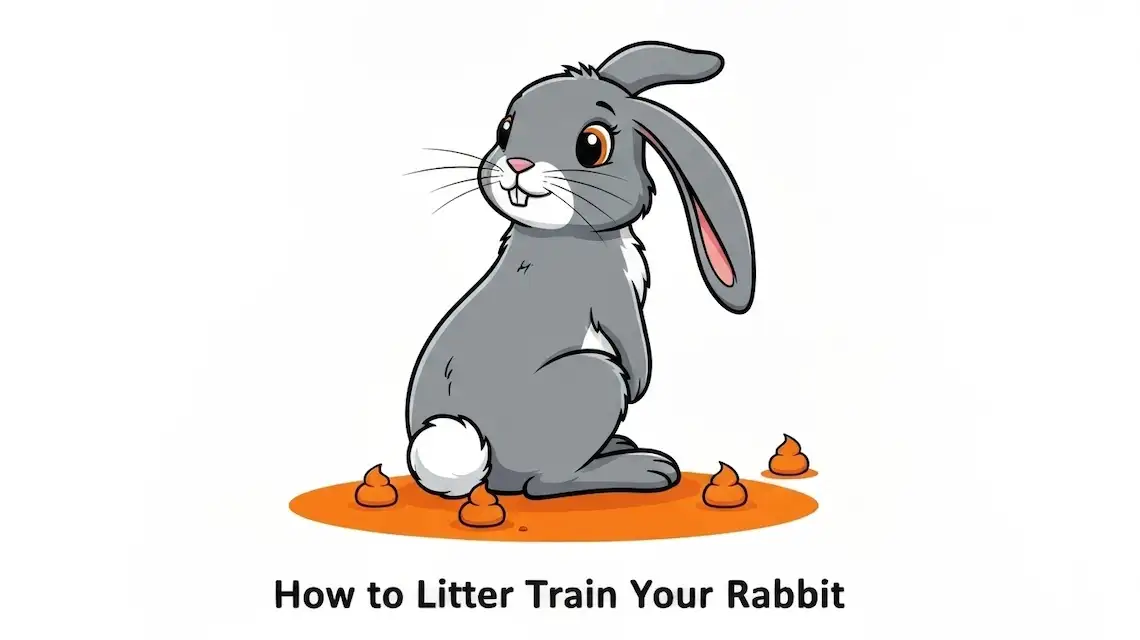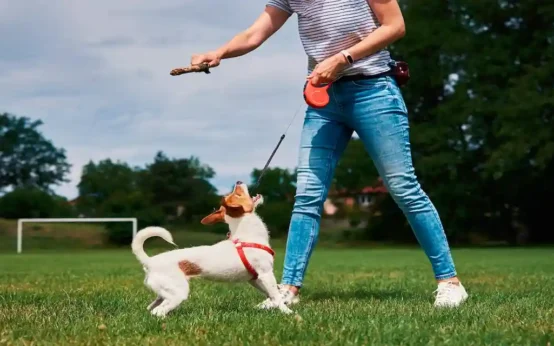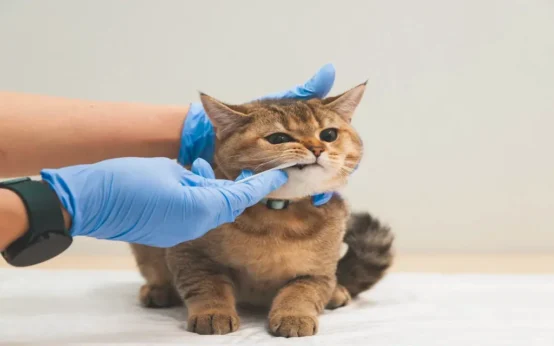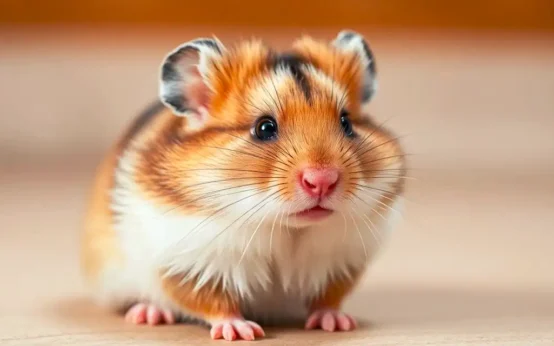Sharing your home with a rabbit is a joy. The snuggles are sweet, the personality is big, and the mess can be real if your bun is not trained. The good news, learning how to litter train a rabbit is simple, and yes, completely doable.
Rabbits are naturally clean animals. They like to use the same spot for bathroom breaks, which makes training faster than most people expect. With a small setup, a clear routine, and a bit of patience, you can keep your floors clean and your rabbit happier.
Litter training does more than save your rugs. It cuts cleaning time, reduces smells, and helps you bond with your rabbit because you will stress less and play more. It also makes health checks easier, since you can spot changes in urine or droppings in one place.
In this guide, you will learn what supplies to pick, where to place the litter box, and how to set it up so your rabbit wants to use it. You will see how hay placement, box size, and safe litter choices affect success. You will get a simple daily routine, positive reinforcement tips, and fixes for accidents or corner peeing. By the end, you will know exactly how to litter train a rabbit and keep your space tidy.
Next up, we will cover the right litter and box size, the easiest box locations, how to encourage good habits, the cleaning schedule that works, and troubleshooting for stubborn cases.
Why Litter Train Your Rabbit? The Key Benefits
Training your rabbit to use a litter box saves time, cuts odors, and keeps your space tidy. It also supports natural habits, which makes success more likely and gives your bun more freedom around the home.
Health and Hygiene Advantages for Your Bunny
Litter training supports clean habits that protect your rabbit’s health. Rabbits often choose one corner to pee and poop, so a box meets that instinct. A clean box helps prevent urinary tract infections by keeping urine away from the skin and genitals, which reduces irritation and bacterial growth. It also keeps the belly, hocks, and tail area dry, so fur stays clean and mat-free.
Use paper-based or wood-pellet litter to absorb moisture and trap smells. Remove wet spots daily and change the box often. This reduces ammonia buildup and lowers the risk of respiratory stress. You will also spot changes in urine color, output, or droppings sooner, which helps you act fast.
If accidents suddenly increase, monitor for signs of illness, like straining, pink or sludgy urine, loud tooth grinding, or lethargy. Call your vet if anything looks off. When people search the benefits of litter training rabbits, health wins are near the top, and for good reason.
Making Your Home Rabbit-Friendly Without the Mess
A litter-trained rabbit can enjoy a larger, safer area without chaos. Set up zones, like a quiet rest spot, a play space, and a feeding corner, with the box nearby. Clear paths help your rabbit feel secure, which reduces stress and random accidents. Place hay right next to or inside the box to encourage consistent use, since rabbits often eat and poop at the same time.
Fewer accidents mean less scrubbing, fewer sprays, and lower costs on disposable pads. You save time each week, which makes caring for your rabbit easier if you work long hours.
Litter training also keeps homes family-friendly. Kids can help with simple chores, like topping off hay and removing soiled spots, while you handle deep cleans. The payoff is a fresher home, more daily free-roam time, and easier bonding. When learning how to litter train a rabbit, remember that structure equals freedom.
Gathering Supplies: What You Need to Start Litter Training
Set yourself up with a simple kit before you start. Keep the setup in a small enclosed area at first, like an exercise pen or a bathroom. This limits accidents and teaches location. Focus on rabbit litter box essentials that are safe and easy to clean. Start with these:
- Litter box with low entry and a higher back
- Safe litter (paper or wood-based, never clumping clay)
- Hay and a hay rack placed over or beside the box
- Wood pellets for litter, not to eat
- Rabbit pellets for feeding, kept away from the box
- Cleaning tools like a small scoop and white vinegar
This is the fastest path for how to litter train a rabbit safely and cleanly.
Choosing the Right Litter Box Size and Type
Pick a box your rabbit can hop into, turn around in, and lounge without touching the sides. A good guide is at least 1.5 times your rabbit’s body length. Choose a low front, about 3 to 4 inches, for easy access. A higher back, around 6 inches, helps contain urine spray.
Corner litter boxes work well because many rabbits prefer using a corner. They fit small spaces and encourage natural positioning. For larger breeds, a medium cat litter box or a shallow storage bin works better. Skip covered boxes, since they trap odors and reduce airflow. Seniors may need an even lower entry or a small ramp. If you want a grate, use a smooth metal grid and check for toe safety.
Safe Litter Options That Won’t Harm Your Pet
Choose non-toxic, low-dust litter. Top picks include recycled paper pellets, paper crumbles, aspen shavings, and kiln-dried pine pellets. Wood stove pellets can work if they are pure wood, without accelerants or additives. These options absorb well, control odor, and feel safe underfoot.
Avoid cedar shavings, non-kiln-dried pine shavings, scented litters, silica crystals, and clumping clay. These can irritate the lungs or skin, or cause gut issues if eaten. Keep things simple and safe.
Use a thin layer, about 0.5 to 1 inch, to absorb urine without creating a dig pit. Add a small handful of soiled litter on day one to “seed” the box with scent. Place a generous pile of fresh hay in a rack over the box or on one side of the box. Rabbits eat and poop together, which drives quick success. Keep food pellets and water nearby, but not in the box, to prevent confusion or litter ingestion. This setup boosts absorbency, manages odor, and keeps training on track.
Step-by-Step Guide: How to Litter Train a Rabbit Successfully
If you want to know how to litter train a rabbit fast and with less stress, follow a clear plan and keep it consistent. Rabbits like routine, clean spaces, and familiar scents. The process can take a few days for quick learners or a few weeks for young or newly rehomed rabbits. Stick with it and you will see steady progress.
Here is the simple path you will use:
- Observe habits and note favorite potty corners.
- Confine to a small area to set the routine.
- Place droppings and a bit of urine-soaked litter in the box.
- Pair the box with hay and reward with small treats.
- Expand space in stages once your rabbit is consistent.
Young rabbits have shorter attention spans and less control, so expect more accidents at first. Adult rabbits may adjust slower if they are new to your home. In both cases, patience and a calm routine win.
Observing and Setting Up the Training Area
Start by watching where your rabbit naturally pees and drops pellets. Most rabbits pick a corner, usually near hay or along a wall. Your first job is to meet that habit, not fight it.
- Choose a small, easy-to-clean space, such as a bathroom or an exercise pen.
- Place a litter box in the corner your rabbit favors. Add a second box if you see two hot spots.
- Use a low front and higher back box. Lay a thin layer of safe litter and put hay on one side.
- Keep water and pellets nearby, but not inside the litter box.
Keep the setup simple for a few days. Scoop wet spots daily and top off fresh hay often. If your rabbit pees just outside the box, slide the box closer to that exact spot. The goal is to match your rabbit’s choice so the box becomes the obvious place to go.
Introducing the Litter Box and Building the Habit
Make the litter box smell and feel like the right spot. On day one, place a small handful of soiled litter and a few droppings into the box. This scent cue tells your rabbit, “This is the bathroom.”
- Place a generous pile of hay on one side of the box or use a rack just above it. Rabbits often eat and poop at the same time, which locks in the habit.
- When your rabbit hops in to nibble hay and uses the box, say a calm “yes” and offer a tiny treat, like a pea-sized piece of banana or a small herb leaf. That is positive reinforcement.
- If you catch your rabbit about to go elsewhere, gently guide them into the box. No scolding. Accidents happen.
Keep sessions calm and short. Sit nearby while your rabbit explores. Pet gently when they sit in the box and relax. You are pairing the box with comfort and rewards. If your rabbit pees outside the box, blot it up with a tissue and place that tissue into the box, then clean the spot with a 1:1 vinegar and water mix to remove lingering scent. Repeat the cycle. Consistency builds the habit.
Expanding Freedom and Reinforcing Good Behavior
Once your rabbit uses the litter box most of the time in a small area, start adding space. Do this in stages so the habit keeps up with the new room.
Use this simple plan:
- Expand the pen by a few feet for two to three days. Watch for accidents.
- If they stay clean, open another area and add a second box in a likely corner.
- Keep hay available at or over each box. Reward good choices with small, healthy treats.
Handle slip-ups gently. Move any stray droppings into the box. Blot urine, place the tissue into the box, then clean the floor with vinegar and water. If accidents increase, reduce space again for a few days and refresh the routine. For corner peeing, place a box or a heavy piece of furniture to block access.
Helpful tips:
- Young rabbits: Expect extra accidents. Short sessions work best. Keep the setup simple and repeat your routine often.
- Adult rabbits: Changes in home scent can cause confusion. Add an extra box during the transition and give it a week.
- Hormones: Intact rabbits can mark more. If your vet approves, spay or neuter. Many rabbits get cleaner with hormones reduced.
- Surface preferences: If your rabbit targets rugs, cover them during training or place a box on that rug spot.
Keep up the daily rhythm. Scoop, refresh hay, and praise good choices. As your rabbit earns trust, their clean habits will stick, and your home will stay tidy.
Common Mistakes to Avoid When Litter Training Rabbits
Small tweaks prevent big litter training rabbit mistakes. The most common slips include using dusty or scented litter, rushing freedom too soon, and skipping spay or neuter that fuels marking. Clean accidents with a 1:1 vinegar and water mix to erase odor cues. With patience, most rabbits succeed, and how to litter train a rabbit feels simple.
Why Punishment Never Works and What to Do Instead
Punishment creates fear, and fear makes bathroom habits worse. If you scold, clap, or push your rabbit into the box, they may avoid you or the area, then hide and pee elsewhere. Fear also raises stress hormones that disrupt routine. Replace punishment with timed rewards. Keep hay over the box, watch quietly, and the moment your rabbit uses it, mark with a calm “yes” and offer a tiny treat. Add gentle praise and a chin rub if they enjoy touch. Guide accidents, do not correct them. Scoop, place soiled tissue in the box, clean the spot with vinegar, then reset.
Handling Setbacks and When to Seek Vet Advice
Expect setbacks, especially during growth spurts, move-in weeks, or after a room change. Short-term slips often point to behavior, like new territory, missed cleanings, or too much space too soon.
Watch for medical signs. Red, pink, or sludgy urine, straining, dribbling, strong ammonia smell, fewer droppings, or sudden thirst changes suggest a health issue. Pain from dental problems or arthritis can also keep a rabbit from hopping into the box. Intact rabbits may mark more, so plan a vet-approved spay or neuter when appropriate.
Try these fixes first:
- Reduce space for a few days and add an extra box in favorite corners.
- Refresh hay, scoop daily, and use vinegar and water on every accident site.
If accidents persist for more than a week, or any medical sign appears, call your rabbit-savvy vet. Bring notes about frequency, urine color, and diet. Early care protects health and gets training back on track.
Long-Term Tips for Keeping Your Rabbit Litter Trained
Good habits stick when you keep the setup simple, clean, and consistent. Think of this as upkeep for a skill your rabbit already learned. With a steady routine, you will not need to reteach how to litter train a rabbit every season.
Keep a Consistent Cleaning Routine
A clean box invites repeat use. Set a rhythm and follow it.
- Daily scoop: Remove wet spots and soiled hay. Top off fresh hay.
- Weekly refresh: Empty the box, rinse, and wipe with a 1:1 vinegar and water mix. Let it dry before refilling.
- Monthly check: Inspect the box for scratches or odors. Replace worn boxes that hold smell.
Use safe, low-dust litter and a thin layer to absorb urine. Keep hay plentiful so your rabbit lingers and uses the box more.
Use Multiple Boxes for Multi-Room Access
If your rabbit roams more than one room, give them easy options.
- Place a box in each active area, ideally in corners or along walls.
- Keep the layout similar across rooms, with hay on one side and a low entry.
- For stairs or long hallways, add a “stopover” box to prevent accidents mid-journey.
This setup cuts down on missed moments and helps maintain perfect habits during longer play times.
Adjust When Life Changes Happen
Rabbits react to change. A new pet, a move, house guests, or a new rug can cause slips.
- Add a temporary extra box in the new hot spot.
- Reduce roaming space for a few days, then expand again.
- Keep routines steady, like feeding times and cleaning.
If you notice straining, pink urine, dribbling, or fewer droppings, call your rabbit-savvy vet. Pain or illness can derail good habits.
Keep Observing and Reinforce the Good
Watch patterns. If your rabbit starts aiming for a corner, move a box there. When they use the box, mark the moment with a calm “yes” and a small treat. Keep hay inviting, floors clean of scent, and praise ready.
These small habits protect your clean home and your rabbit’s comfort. Stay consistent, and you will both enjoy a tidy, low-stress life together.
Conclusion
Clean setup, steady routine, and kind rewards bring fast results. You picked safe litter, set the box where your rabbit prefers, paired it with hay, and reinforced good choices. You kept space small at first, then expanded with care. You cleaned daily, reset accidents with vinegar, and added extra boxes when needed. These steps protect health, cut odors, and save time, which means more play and less stress.
Stay patient. Most rabbits learn quickly once the bathroom spot feels obvious and comfortable. If slips happen during changes, scale back space, refresh hay, and guide the habit again. Watch for medical signs if accidents persist, and keep working your plan. The payoff is a tidy home and a relaxed rabbit that trusts you.
Try these tips this week and track progress for a few days. Share what worked, what did not, and any small wins. Your story can help another rabbit owner succeed. If you need a refresher, come back to the steps and use them again. You now have a clear plan for how to litter train a rabbit, from setup to long-term success.
Related post: How to Take Care of a Rabbit
How to Litter Train a Rabbit FAQ:
How long does litter training a rabbit usually take?
Most rabbits learn the basics in a few days to a couple of weeks. Hormones, age, and setup matter. Spayed or neutered rabbits learn faster and keep better habits long term.
What kind of litter is safe for rabbits?
Use paper-based pellets, aspen shavings, or kiln-dried wood pellets, such as stove or equine bedding pellets. Avoid clumping clay, silica crystals, scented litters, corn cob, and walnut shell. These can be harmful if eaten or dusty.
What size litter box should I get?
Choose a box big enough for your rabbit to stretch and turn, often cat-sized or larger. Many people use a large cat pan or a plastic cement mixing tub. For seniors, pick a low front entry.
Where should I put the litter box?
Place it in the corner your rabbit chooses, not where you prefer. Add a second box in the main hangout spot. Keep a box near hay, since rabbits like to eat and potty at the same time.
Should I put hay in the litter box?
Yes. Put hay in one end of the box, or in a rack that hangs over it. This keeps your rabbit in the box longer and helps build the habit.
How do I start training in a new space?
Begin in a smaller area, like a pen or a bunny-proof room. Give at least one large box, then expand space once your rabbit uses the box most of the time.
Why is my rabbit peeing outside the box?
Common reasons include hormones, a box that is too small or dirty, a bad location, or stress. Move the box to the chosen corner, make it bigger, clean more often, and spay or neuter if not already done.
Why do I find poop pellets outside the box?
Scattered dry pellets can be marking. It is normal during training or bonding. Keep a few boxes in claimed spots, sweep often, and the scatter usually drops once habits settle.
How often should I clean the litter box?
Remove wet spots and soiled hay daily. Do a full change two or three times per week, more in hot weather. Wash with warm water and white vinegar to cut urine scale.
What’s the best way to handle accidents?
Blot, then clean with vinegar or an enzyme cleaner. Move any soiled paper or a bit of used litter into the box to guide your rabbit. Never punish. Reward your rabbit when they hop in the box.
Does spaying or neutering help with litter habits?
Yes. It reduces territory marking and spraying, and it helps training stick. Most rabbits show better box use a few weeks after surgery.
My rabbit digs in the litter box. What can I do?
Try a deeper box, add a grate or litter screen, and provide a separate dig box with shredded paper or soil-free, rabbit-safe fill. Keep hay in a rack to cut the urge to toss it.
What if my rabbit chews or eats the litter?
Switch to paper pellets or wood pellets, which are safer if nibbled. Offer more hay and chew toys. If chewing is heavy, use a grate so your rabbit cannot access the litter.
How do I stop couch or bed accidents?
Block access while training. Place a litter box on the couch during supervised time, then remove it later. Use washable covers. Once habits improve, give short, watched visits and redirect to the box at the first sign of circling.
Can I train two rabbits to share one box?
Bonded pairs often share, but offer two large boxes at first. Keep both boxes clean. Once you see steady use, you can try reducing to one large box if it stays clean.
What if my rabbit only uses one corner of the box?
That is fine. Put hay on the opposite side to keep space for potty use. If urine splashes, switch to a high-back box.
Which cleaners are safe for the litter area?
White vinegar and water work well for urine scale. Use pet-safe enzyme cleaners for fabric or carpet. Avoid strong scents, they can deter box use.
How can I encourage a stubborn rabbit?
Make the box the best spot. Use soft, low-dust litter, plenty of fresh hay, and easy access. Praise and a tiny treat when they hop in helps. Keep the setup consistent.
Are corner litter boxes a good idea?
They fit small spaces, but many are too small. Most rabbits do better with a larger, rectangular box with high sides and a low entry.
Could health issues affect litter habits?
Yes. Sudden changes, straining, frequent small pees, blood, sludge, or strong odor can signal a problem. Call your rabbit-savvy vet if habits change overnight or your rabbit seems uncomfortable.
What should I do when traveling with my rabbit?
Bring a small low-entry box lined with familiar litter and hay. Keep the setup close to your home layout. Offer breaks and quiet time so your rabbit feels safe.



 Dog Trick Training for Beginners
Dog Trick Training for Beginners  Gingivitis Cats Symptoms Every Pet Parent Should Know
Gingivitis Cats Symptoms Every Pet Parent Should Know  How to Make Dog Cookies at Home
How to Make Dog Cookies at Home  Wet Food or Dry Food for Cats?
Wet Food or Dry Food for Cats?  What Is the Healthiest Hamster Breed for Your Home?
What Is the Healthiest Hamster Breed for Your Home?  Cat Food Intolerance Symptoms: How To Spot Them Early
Cat Food Intolerance Symptoms: How To Spot Them Early